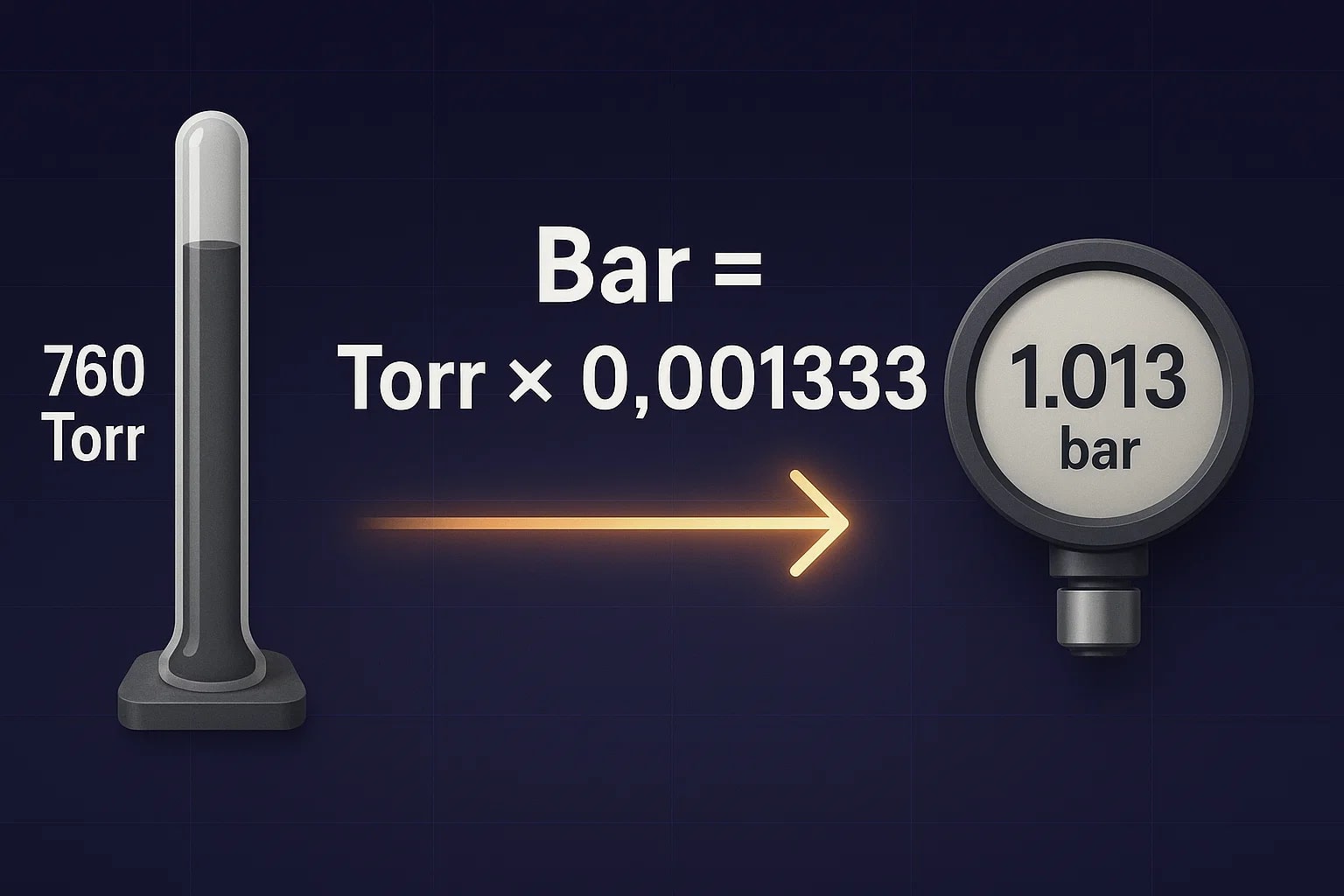torr to bar – How to convert Torr to bar
The torr is a traditional unit of pressure, commonly used in physics, chemistry, and vacuum science. The bar, on the other hand, is a widely used metric unit in engineering, diving, and meteorology. Converting torr to bar helps translate laboratory measurements into practical values that are easier to apply in daily and industrial settings.

What is a torr?
A torr is defined as 1/760 of an atmosphere, equal to approximately 133.322 pascals. It is often used in vacuum measurements, plasma physics, and medical fields.
What is a bar?
A bar is equal to 100,000 pascals. Though not an SI unit, it remains popular in meteorology, automotive engineering, and industry because it approximates atmospheric pressure at sea level (1.013 bar).
How to convert torr to bar
Bar = Torr × 0.001333
Example:
Bar = 750 Torr × 0.001333 ≈ 0.999 bar
For quick results, you can try the Conversion Tools. Other useful calculators, like the Speed Converter, are also available.
Do you know?
-
About torr: High vacuum chambers in physics labs often operate at pressures below 10⁻⁶ Torr, millions of times lower than atmospheric pressure.
-
About bar: Scuba tanks are filled to about 200 bar, which equals nearly 150,000 Torr — showing just how different the scales can be.
How Vacuum Science Met Industry
In the mid-20th century, vacuum technology advanced rapidly for use in electronics, such as cathode-ray tubes and semiconductors. Scientists measured pressure in torr, but manufacturers working with engineers preferred bar or pascal. To avoid confusion, standard conversions like torr to bar became vital.
This translation of units helped scientists share discoveries with industries, leading to innovations in televisions, microchips, and even space research. Without this bridge between torr and bar, communication across science and engineering would have been far more difficult.

Numbers That Connect Two Worlds
The formula is simple: multiply torr by 0.001333. But converting torr to bar is more than math — it’s the link between the high-precision world of vacuum science and the practical systems that drive engineering and everyday life. From physics labs to scuba tanks, this conversion ensures pressure speaks the same language everywhere.

